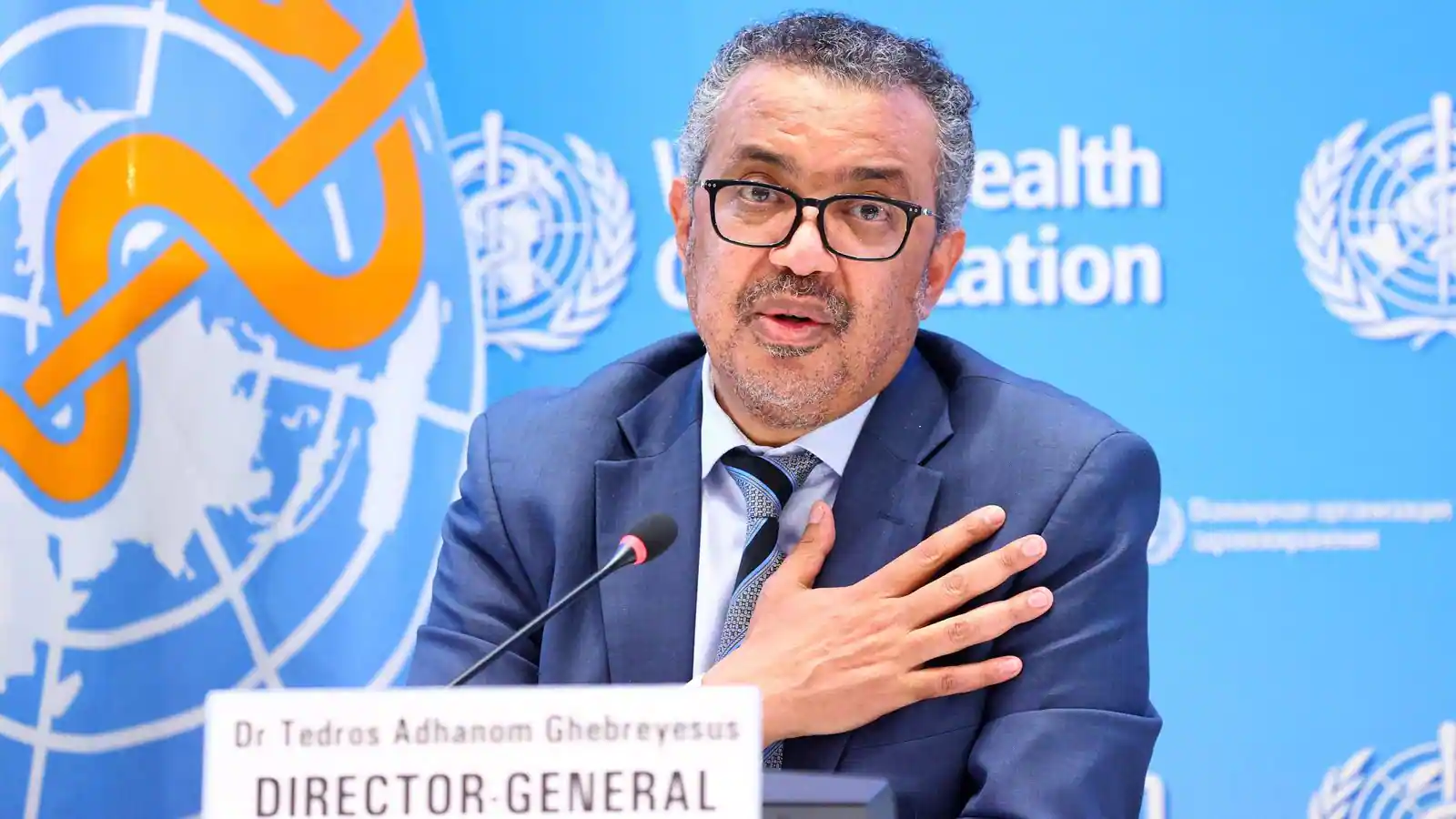The World Health Organization (WHO) says that the COVID-19 outbreak will probably stop being a global emergency soon — but we’re not there just yet.
After a meeting of its emergency committee on 27 January, the WHO said this week that it still considers the outbreak what it calls a public health emergency of international concern (PHEIC), but that the COVID-19 pandemic is at an inflection point — meaning that high levels of immunity to the virus SARS-CoV-2 are beginning to limit its impact and reach. The agency said that nations must remain vigilant, however, and laid the groundwork for administrative changes to keep pressure on the virus in a post-pandemic world.
Many researchers agree with the WHO’s assessment. “The WHO can’t say that the public-health emergency is over when you’ve got millions of cases and you’ve got thousands of deaths a day,” says Salim Abdool Karim, an epidemiologist who advises the South African government on COVID-19 and directs the Durban-based Centre for the AIDS Programme of Research in South Africa. For instance, China has seen a surge in infections and deaths across the country since it lifted its zero-COVID policy at the end of last year.
But others think that the pandemic has already moved beyond the legal criteria used to define an infectious-disease outbreak as a PHEIC (pronounced ‘fake’). The WHO’s decision came on the same day that President Joe Biden announced that the United States would end its own COVID-19 emergency declarations on 11 May.
A weighty term
The granting and lifting of a PHEIC matters on a global and national scale because it triggers actions and redirects resources worldwide. The WHO emergency status compels the agency’s member nations to report cases of infection, for instance.
In particular, how the WHO labels the outbreak is important as a cue for the global community, Karim says. “What signal is it sending to the international air travel agency? What signal is it sending to researchers, to manufacturers and investigators developing new drugs and new vaccines?”
That’s why some researchers think it isn’t yet time to lift the PHEIC. “Declaring the public-health emergency over would give governments and some public-health agencies permission to look away and move on to other things,” says Mark Woolhouse, an epidemiologist at the University of Edinburgh, UK. “It remains a very significant public-health problem. About a quarter of the world is still unvaccinated, and that’s potentially a lot of vulnerable people.”
An extraordinary event
The WHO first declared COVID-19 a PHEIC in January 2020. The emergency status is revisited every three months, when a committee of experts discusses the situation and then makes a recommendation.
The next opportunity for the WHO to lift the designation will come in April — and some say that should be the end of it. A PHEIC is defined by the WHO’s binding rules, the International Health Regulations (IHRs), as “an extraordinary event” that risks spreading an infectious disease internationally.
That definition doesn’t really apply to COVID-19 anymore, says Preben Aavitsland, director for surveillance at the Norwegian Institute of Public Health in Oslo. “The disease has already spread to every corner of the world. When the virus is already abundantly present in Nairobi, Napoli, Nashville, Nagoya, Nagpur and Nanjing, there is no extra risk introduced by travel and trade.”
“Given the strict definition of a Public Health Emergency (PHEIC), I’m not sure how the Committee concluded COVID still meets the criteria,” tweeted Devi Sridhar, a public-health researcher at the University of Edinburgh, on 30 January. “Of course it’s still a major global health problem alongside many other ones but PHEIC is a specific alarm bell.”
David Heymann, an epidemiologist at the London School of Hygiene & Tropical Medicine who chaired a WHO emergency committee on a Zika virus outbreak in 2016, says the decision on whether to remove the PHEIC status from COVID-19 will be driven by politics, as well as mortality rates and other data.
“This is a political tool, and governments pay attention,” he says. “I expect that’s one of the reasons why [the WHO has] continued the public-health emergency.” Committee members did not respond to Nature’s requests for comment.
An inflection point
The situation is made more complex by the term ‘pandemic’. This is legally and operationally distinct from PHEIC, but is often used interchangeably with it to describe the state of the COVID-19 outbreak.
The WHO does not have the mandate or power to declare the start or end of a pandemic, because, unlike PHEIC, the term is not a category in the IHRs.
The WHO first called the COVID-19 a pandemic in March 2020, but contrary to reports, says WHO spokesperson Tarik Jašarević, this did not mean that the agency had declared a pandemic. Instead, it merely “characterized the situation”.
By saying this week that the COVID-19 crisis is at an inflection point, the WHO’s emergency committee seems to be preparing to end the PHEIC in April, Aavitsland says. As part of that transition, the WHO is encouraging countries to integrate COVID-19 surveillance and vaccination into routine programmes.
“I guess the WHO now will start making the plan for the transition and have this ready for the next meeting, in three months’ time,” he says.












